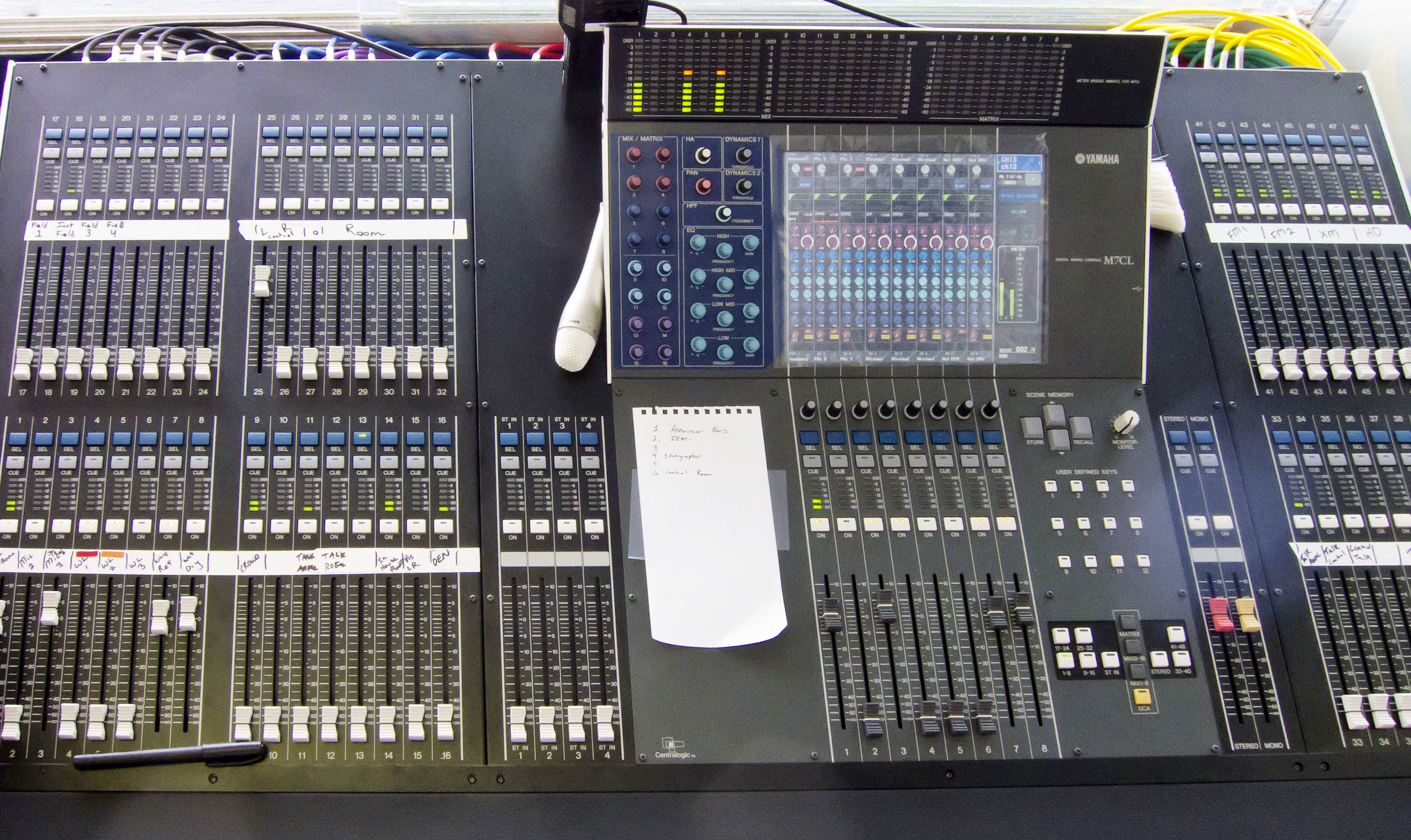Why Are Those @#$%&*! Commercials So Loud?
Nov 01, 2006 10:02 AM
Why are commercials so loud? I think another question needs to be answered before that one: why are television programs so soft? Once you start thinking about that one, you may be starting to see where I’m going. Most of the answer lies in dynamics.
You’re relaxed in your favorite easy chair, munching on popcorn, the cat is asleep on your lap, and you’re watching a whodunit on TV. The private eye knows the killer is lurking somewhere in this dark house. He tiptoes from room to room in his gumshoes barely making a sound as he opens the door to the basement, when...BAMMM!!!! BAMMM!!!! BAMMM!!!! MUSIC PLAYED LOUDLY!!! GUY SCREAMING AT THE TOP OF HIS LUNGS!!! A MASSIVE ASSAULT ON YOUR EARS!!! You flinch, popcorn goes flying everywhere, and the cat is jerked rudely awake and catapults from your lap leaving behind shreds of your pants and leg in his wake. That THUMP THUMP THUMP you hear is your heart trying to recover. Blasted commercials.
Blasted commercials.
Okay, I’m partially responsible for creating a scenario like that. I’ve even had experiences like it before, we all have. So, the question is: why are commercials so loud? I think another question needs to be answered before that one: why are television programs so soft? Once you start thinking about that one, you may be starting to see where I’m going. Most of the answer lies in dynamics. No, not the name of my company, but in the difference between loud and soft sounds in any given recording. Recordings typically have a “wide” or “narrow” dynamic range.
A good example of a wide dynamic range can be heard in classical music such as Beethoven’s Fifth Symphony. Here you have a solo horn playing very softly, and later the entire orchestra is playing double fortissimo (extremely loud). If you’re watching this recording on a VU meter, like the type found on a recording console, you’ll see the needle stays on the left part of the meter and barely moves during the horn passage. During the full orchestra part, it swings all the way to the right and nearly jumps out of the glass . The measurement of the difference between the softest and loudest parts is called the dynamic range. Beethoven’s Fifth has a wide dynamic range (think of how wide the needle swings from left to right).
During the full orchestra part, it swings all the way to the right and nearly jumps out of the glass .
A good example of a narrow dynamic range can be heard in a typical alternative rock or punk song. Here, the drums, guitars, bass and singer are all competing to see who can be the loudest - and everybody is winning. A look at this recording on the same VU meter shows that the needle pretty much stays swung to the far right, barely moving the entire song. Just like film can’t capture all the degrees of colors and contrasts the human eye can see, recordings can’t capture all the dynamic range of sounds we hear. So for over a hundred years, recording engineers have been trying to capture more and more dynamic range. As recording mediums have improved, so has dynamic range. As dynamic range has improved, commercials have apparently gotten louder.
That leads us back to the question: why are television programs so soft? It’s not really a question of how soft they are but one of their dynamic range. Modern film and television soundtracks now have the dynamic range possible to make the recording more interesting and “listenable.” Soft parts such as the private eye tiptoeing around are very quiet, while gunshots are very loud in comparison. However, the average loudness (i.e. dialogue) falls somewhere in the middle. And the wider the dynamic range is, the farther this middle is from the softest and loudest parts. Or, in other words, the dialogue is softer. Unfortunately, some movies and TV programs are wall-to-wall loud sounds, and these just wear the listener out over a lengthy period of time. Their average loudness is not very far from the softest and loudest parts. If you spend hours listening to something that’s loud and has a narrow dynamic range, you eventually get ear fatigue. An example is flying in a prop plane or jet next to the engines. When you finally de-plane, the silence you craved is instead replaced by hiss in your ears.
Soft parts such as the private eye tiptoeing around are very quiet, while gunshots are very loud in comparison.
So, why are commercials so loud? An advertiser only has a mere thirty seconds to capture your attention, and one way to do this is to BE LOUD. Engineers typically mix voice and music together very “tight,” or with a narrow dynamic range, and then push the overall sound to the loudest the recording can handle. Plus, special processors are used that make the voice and sound effects sizzle and jump right out of the TV at you. This contest for your attention has become a bad case of the Jones’ next door. Advertisers are always trying to be better, louder, faster, brighter, gutsier, funnier, bolder, and sexier than the advertisers before and after their commercial. So, the commercial that comes on after the gumshoe private eye opens the creaky basement door is loud in comparison. If the commercial comes right after a concert video of a loud punk band, it may not seem as loud. It’s all in the dynamic range. Now if I can only find the cat, I can get back to the movie. Ah, there he is, I hear him eating the popcorn under the chair.
Neil Kesterson is the owner of Dynamix Productions in Lexington, KY. He has been trying to keep up with the Jones' for over twenty years.
Tags: Dynamix Productions, commercials, loud, loud commercials, Neil Kesterson



